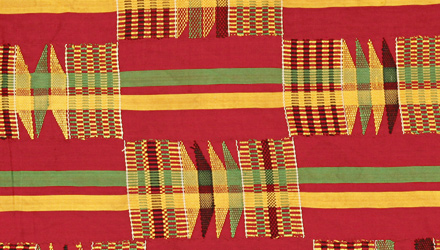Whispers of a Woven Language – Kente Cloth
PRIMITIVE - Wednesday, May 21, 2014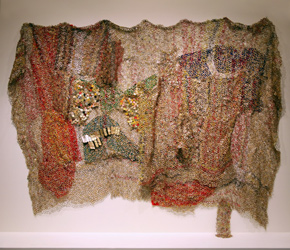 |
|
By Misaki Imagawa
On a recent trip to New York coinciding with Sotheby’s contemporary art auction, I visited a gallery exhibition and came across a work of art that was refreshingly distinct. This piece, composed of aluminum and copper wire, hung on the wall like a golden tapestry interwoven with streaks of silver, red and black. Although clearly a sculpture, it mimicked the movement of cloth undulating in waves on the wall, and it kept me rooted to the spot longer than any other artwork I had seen.
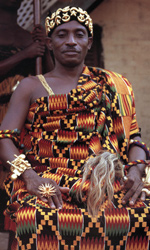 |
|
|
The piece was created by a Ghanaian artist named El Anatsui. Cloth, I discovered, was exactly what influenced, inspired, and informed his work. However, it was not just any cloth, but instead, kente, a traditional strip woven textile deeply connected to his heritage in Ghana. Realizing PRIMITIVE has a wonderful collection of original, authentic kente, I became motivated to learn more about this valuable cloth.
Kente is cloth woven of cotton and silk that originates in the Ashanti Kingdom in Ghana, West Africa. Although having the appearance of a large, fine tapestry, kente was traditionally woven as thin strips stitched together to form a toga-like garment worn only by the chiefs for festivals, special occasions and ritual ceremonies.
One particular festival where kente is prevalent caught my attention. It was the Adae Kese, which dates back to the late 17th century and commemorates the creation of the Ashanti Kingdom. At that time a civil war was won by Osei Tutu, the first Asantehene, or king, of the Ashanti. It was also during his reign that a legendary Golden Stool was delivered from the heavens, an artifact that is still revered to this day. But that, perhaps, is a story for another time.
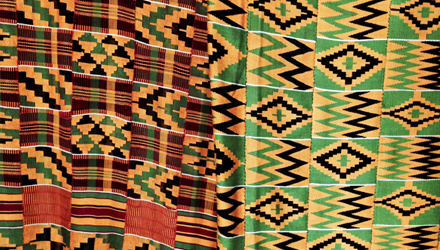 |
Imagine a slow procession taking place at the Adae Kese festival under a blazing sun, colorful fans wielded by attendants wafting mild breezes upon the king, chiefs, and queen mother riding in majestic palanquins covered with large parasols. Drumbeats and music fill the air. The procession is surrounded by crowds of young and old alike and all are dressed in kente of every color. Gold represents royalty, wealth and spiritual purity; silver, serenity and joy; blue for peacefulness, harmony and love; streaks and flashes of black, yellow, green, maroon, pink, grey, purple, red, and white all epitomize important elements of life, growth and spirituality. Imagine the procession coming to a halt, the chiefs standing and dancing with a sword in one hand and a horsetail fly whisk in the other. Their kente sway with the polyrhythmic beat of the drums, the rapid dance movements creating billowing tapestries of color. It is a unique visual language of shapes and patterns that continues to be spoken through generations, across seas and centuries.
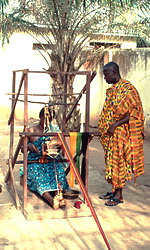 |
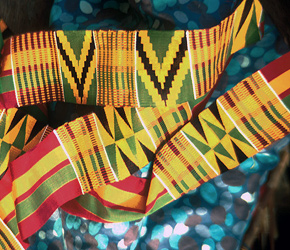 |
Today, in addition to being inspiration for contemporary artists like El Anatsui, kente is increasingly being collected for its aesthetic beauty and artistry. When examining PRIMITIVE’s kente collection I am filled with awe and admiration as well as a sense of mystery. These original woven works narrate unique stories with their colors and designs. All were worn with pride and reference events long past. They speak words I cannot fathom, yet they do so in a language that is easy to appreciate. Their voice may now be just a whisper, but it is getting louder and still very much alive.
Download this Article: Whispers of a Woven Language.pdf
